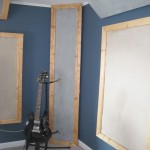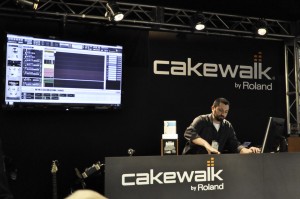 So maybe you have SONAR X1 Production Suite running on a killer computer, and now you might have a sound cloud over your mix position; what’s next? Last week I exemplified how I built and installed a hanging sound cloud and this week I will go into detail how I built corner traps to help tame my unorthodox (square) production room. Before reading this post, you may want to visit my article from last week which goes into some detail on room shapes.
So maybe you have SONAR X1 Production Suite running on a killer computer, and now you might have a sound cloud over your mix position; what’s next? Last week I exemplified how I built and installed a hanging sound cloud and this week I will go into detail how I built corner traps to help tame my unorthodox (square) production room. Before reading this post, you may want to visit my article from last week which goes into some detail on room shapes.
My room, unfortunately for me is dead square. This is about the worst case scenario so I had to do some research and talk to a lot of friends who are acoustic professionals such as Gavin Haverstick of Haverstick designs. With my room being about 13.5’ x 13.5’ and 7.5’ ceilings, he has my mix position at 62” off the front wall. So with my positioning about right, and a sound cloud overhead to take out the first ceiling reflections, the next thing to do was try to knock out the corners of the room where bass frequencies could become a big problem.
I decided to make custom corner traps based on my personal situation. Once again, every room and everyone’s needs are different, so if you are on a tight budget, I think it’s best to first figure out what’s important to YOU. For my situation, here were my goals for corner traps:
- Cost effective
- *Less square footage (I will discuss this below)
- Aesthetically pleasing to the eye
- Effective bass trapping
- Light-weight




